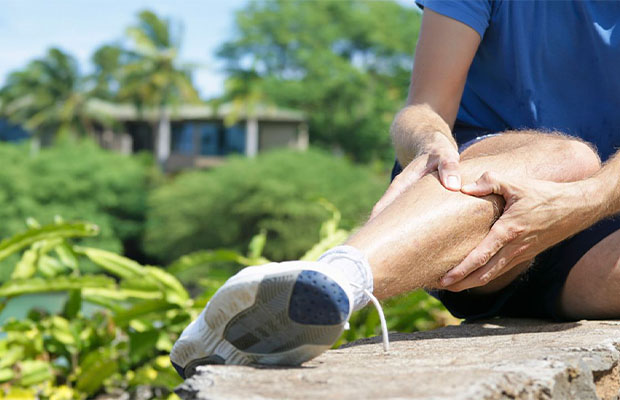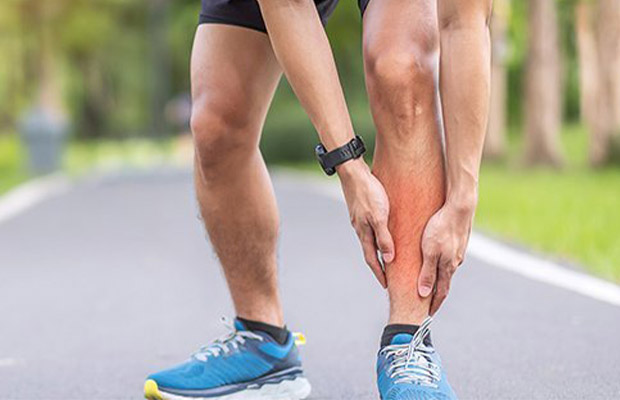Do Flat Feet Cause Shin Splints? Treatment & Prevention

Shin splints are a typical exercise-related issue. Shin splints are referred to as pain along the tibia’s inner edge.
In most cases, shin splints appear after exercise. They are frequently related to running. Shin splints can develop from any strenuous sports activity, particularly if you’re just beginning an exercise regimen.
Do flat feet cause shin splints? Exercise-related shin splints are significantly more likely to occur if you have flat feet or someone you know has them.
You can learn more about shin splints by continuing to read.
Table of Contents
Connection Between Flat Feet And Shin Splints
We are taught as children that everyone is unique, and it is true on many levels. Each person deals with their own particular configuration of inherited physical traits that frequently get in the way of optimal physical activity, even though the majority of teachers and parents mean to stress that everyone has their own thoughts and feelings. Some people can only comfortably breathe heavily for a certain amount of time due to asthma, while others can only run for a limited amount of time due to weak knees. Additionally, a surprising number of people have flat feet, which increases their risk of developing shin splints. Why do those who have flat feet develop shin splints? Let’s find out.
Shin Splints: What Are They?
A variety of issues with the lower leg are frequently referred to as “shin splints.” The term “MTSS” (Medial Tibial Stress Syndrome) is actually used to refer specifically to this condition. The main components of the lower leg that are affected by the pain associated with shin splints are the tibia and fibula, as well as the muscles that attach to them.
Painful pulling on the tibia and fibula can result from these muscles being overworked. In the front of the lower leg, shin splints cause a dull, aching pain. Some only experience it while exercising, while others do so both during and after exercise.
Pain can occasionally be constant. It may hurt to touch the area and there may be a pain in the muscles or along either side of the shinbone. Sometimes, swollen muscles will irritate the nerves in the feet, leaving them feeling numb or weak.

Causes Of Shin Splints
Let’s discuss shin splints after you have a better understanding of flat feet to see if you can discover how the two are connected before the article is finished. The majority of people experience shin splints as a result of running, jumping, falling, and occasionally walking. The most obvious indication that you have shin splints is a pain in your shins during or after vigorous exercise on your feet.
Shin splints develop when your skeletal and muscular structures cannot withstand the force of the footsteps hitting the ground too forcefully. Even if your leg muscles are very strong, taking a step that impacts your bones vertically can cause pain, ache, and swelling at a specific location in your shin. In response to gentle probes, your shins might also feel sensitive and painful.
Why Flat Feet Can Lead To Shin Splints?
Shin splints during exercise are much more likely to occur if you have flat feet or someone you know has them. This is because, like your car when you drive over a pothole, the springy arch that most people have served as a shock absorber. When someone with arched feet steps or jumps, that tendon stretches like a rubber band and absorbs some of the impacts, keeping the foot off your shins. Due to the lack of shock-absorption in flat-footed individuals, every step you take, whether you’re walking, running, or jumping off of something, is likely to cause more impact damage to your shins.
People with flat feet are accustomed to some minor leg and foot discomfort as a result of their unnatural foot structure. The pain brought on by flat feet, however, is typically felt in the bottoms of the feet, possibly also in the knees and hips. It’s time to see a medical professional if you begin to experience pain, achiness, or tenderness in your shins.
Treatment Of Shin Splints
Nonsurgical Treatment
- Rest. Since overuse is frequently the cause of shin splints, the usual course of treatment entails a period of several weeks’ rest from the painful activity. You can substitute less strenuous aerobic exercises like swimming, riding a stationary bike, or using an elliptical trainer while you recover.
- prescription non-steroidal anti-inflammatory drugs. Ibuprofen, aspirin, and naproxen are a few examples of medications that lessen pain and swelling.
- Ice. Use cold packs several times a day for 20 minutes at a time. Do not directly apply ice to the skin.
- Compression. An elastic compression bandage may stop further swelling.
- Flexibility training. Your shins may feel better after stretching the muscles in your lower legs.
- Supportive shoes. Your daily activities will be less stressful on your shins if you wear shoes with good cushioning.
- Orthotics. Orthotics may be helpful for people with flat feet or persistent shin splint issues. By stabilizing and aligning your foot and ankle, shoe inserts can relieve pressure on your lower leg. Orthotics can be made specifically for your foot or bought “off the shelf.”
- Return to exercise. Shin splints typically go away with rest and the straightforward remedies mentioned above. For at least two weeks, you should be pain-free before starting an exercise program again. Remember that you need to exercise more moderately when you start up again. Exercise should not be performed as frequently or for the same amount of time as it was previously.
Before working out, make sure to properly warm up and stretch. increasing exercise gradually Stop exercising right away if you start to experience the same discomfort. Use a cold pack and take a day or two off from work. Resuming your workouts at a lower intensity is a good idea. Even more gradually than before, up the training.
Surgical Treatment
Shin splints rarely require surgical intervention. When nonsurgical treatment fails to improve very serious cases, surgery has been performed. The effectiveness of surgery is unclear, though.
Prevention Of Shin Splints
Shin splints can be avoided by taking certain steps.
Increase your fitness level gradually. Gradually increase the frequency, intensity, and length of your workouts.
Cross train. Replace jogging with low-impact activities like cycling or swimming.
Put on a pair of athletic shoes that fit properly. Use the “wet test” to ascertain your foot’s shape for the best fit.” Step off the shower onto something that will leave a trace, like a brown paper bag. If you have a flat foot, the impression of your entire foot will appear on the paper. The soles of your feet—the ball and heel—will be visible if you have a high arch. Sports shoes that fit your unique foot pattern should be your first choice when shopping.
Additionally, be sure to wear shoes made specifically for your sport. Shin splints can be exacerbated by long-distance running in court-style sneakers.
Barefoot running. Running barefoot has become more popular recently. Shin splints, according to many, have been relieved. According to some research, running barefoot spreads the impact stresses among muscles, preventing any one area from being overloaded. However, there is no concrete proof that running barefoot lowers the risk of any injury.
Tags: Flat Feet, Shin Splints